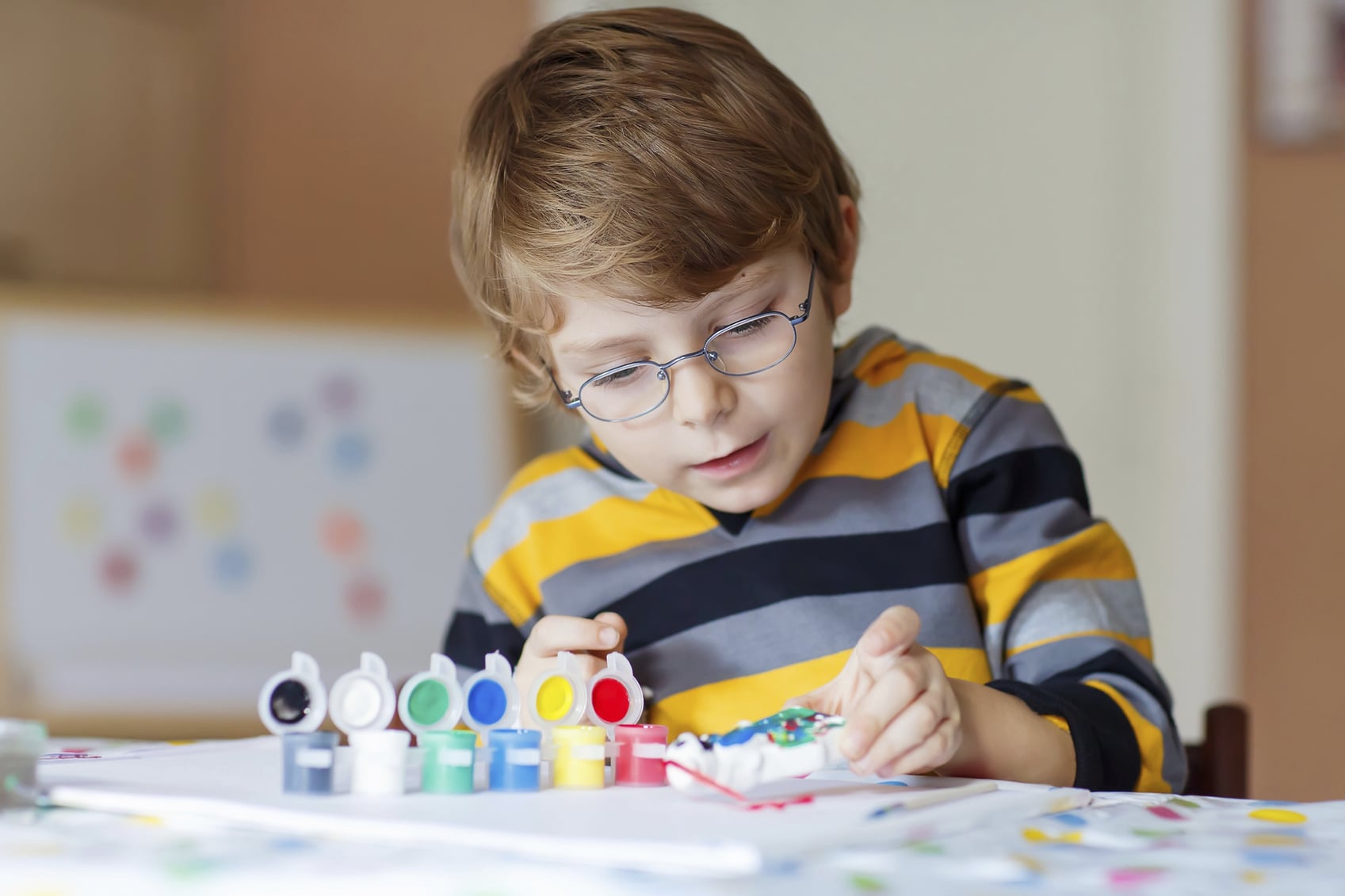
Children’s Visual Development
The visual system is extremely complex, yet it is not fully developed at the time of birth. A child’s first months and years are spent learning to use their eyes and fine tuning their visual perception. The following is a guide to understanding your child’s visual development.
Visual Development at Infancy
At birth, an infant is extremely nearsighted and can typically only focus on objects up to 12 inches in front of them. Within a month, most infants are able to briefly focus on objects as far as three feet away. By four months a child will typically smile or otherwise indicate that they recognize a parent from across the room. The muscle coordination that keeps the eyes tracking together is also not fully matured resulting in a condition caused strabismus. The eyes may turn in or out and not track together; however, this should improve significantly by about two months of age. By this time, an infant should be able to visually track objects, and they should be able to bat at moving objects with the hand by three months.
During the first couple of weeks of life, a baby’s eyes are very sensitive to bright light, and the pupils remain constricted in order to protect the eyes. As the retinas develop, the child’s ability to discern patterns and shades of light and dark improves. Babies can typically discern a full range of colour by about four months of age. The visual acuity of most children starts out at about 20/400 but gradually improves to 20/20 by the time that they are six months old. Premature infants may have difficulty interpreting visual information or may develop visual reflexes later than normal. This is referred to as visual maturation delay. Some babies also have a condition called nystagmus in which their eyes may involuntarily jump, wiggle, or oscillate. This condition may or may not be associated with a vision problem.
You should consult your pediatrician or an optometrist or ophthalmologist if your child has
- an eye that is turned in or out that does not resolve by the age of three months,
- one eye that is significantly different from the other,
- an eye that crosses into the nasal area,
- difficulty tracking an object by the age of three months, or
- one eye that remains still while the other eye moves.
Vision Development at Toddlerhood
Focus, depth perception, tracking, and hand/eye coordination continue to improve through the toddler years. As a parent, you can contribute to your child’s visual development by encouraging them to participate in activities that provide visual stimulation as well as utilize fine and gross motor skills, including
- colouring,
- playing with building blocks, and
- identifying objects, colours, and shapes.
Most experts recommend that children have their first eye exam by the age of three, and most children have the necessary language and motor skills by this age to participate in a vision screening.
Vision Development at Preschool
The preschool years are when the child develops the visual and fine motor skills necessary for reading. You can help your child by spending time reading together and letting them see what you are reading and having them point out objects in the pictures. Activities like finger paints, colouring, and Play-Doh encourage the development of fine motor skills. Games that involve throwing and catching help hone gross motor skills as well as hand/eye coordination. Signs of vision problems in toddlers and preschoolers include a short attention span, poor hand/eye coordination, and avoiding activities that require close vision.
Vision Development at School Age
Many eye problems do not become apparent until a child enters school. Toddlers rely mainly on their distance sight while school requires that the child focus on close work for long periods on a daily basis. Every child should have a complete eye exam before starting school to ensure that they are visually able to handle close work like reading and writing.
- Your child should have near vision that allows them to see objects clearly at a distance of 10 to 13 inches.
- Both of your child’s eyes should work together to provide adequate depth perception.
- Your child’s distance vision should allow them to see objects clearly that are beyond arm’s reach.
- Both of your child’s eyes should track and aim accurately and stay focused at the proper distance.
- Your child should have sufficient peripheral vision to be aware of objects located at their side while looking ahead.
A school-aged child may believe that everyone sees the way that they do and may not report their vision problem. Parents should be aware of tell-tale signs, including
- complaining of headaches,
- avoiding close work,
- tilting the head or squinting to see objects,
- holding reading material too close, or
- rubbing the eyes.
School-aged children should see their eye doctor every two years or more often if there are problems or specific risk factors. Contact our office today to schedule your child’s eye exam.